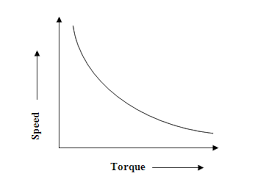Hunting effect in the synchronous motor is a common term in the field of electrical engineering. So let’s learn it today using an example.
What is the Hunting effect in the synchronous motor?

As the name suggests, synchronous motors are capable of running at constant speed irrespective of the load acting on them. The hunting effect in synchronous motor are machines is the reason for the mechanical stress in the rotor shaft.
When a synchronous motor runs at somewhat less or more than synchronous speed, an uneven condition emerges within the motor. This specific phenomenon of a synchronous machine is known as hunting.
In the case of synchronous machines, normally when a synchronous motor is running in normal condition the speed of the rotor is the same as the synchronous speed or the speed of the rotating flux. In other words, the relative speed between the rotor and the stator field is zero. Now, in certain circumstances, these relative speed changes sometimes in negative or sometimes in positive quantity. Then the rotor of the motor starts to oscillate and this is what we know as Hunting. This is termed as the hunting effect in synchronous motor.
Hunting Effect of Motor:
So, let us know about the hunting effect in synchronous motor. But before that let’s hear a story first. A story of a Tiger and a Lion.
Once upon a time, a doubt arose among all the animals in a forest. They all thought, who ran faster? Tiger or Lion? So to overcome this confusion, all the animals in the forest came up with a plan. Subsequently, the plan was to organize a running competition between the tiger and the lion. The Tiger and the lion both of them agreed to this competition and on an auspicious day and the event took place.

This situation perplexed all the animals in the forest. Who will be the winner? Who will be the fastest? The race started. At first, both of them were running with the same velocity. But after a while, it was seen that the tiger is far ahead of the lion. Now, if the lion wants to run as fast as the tiger, the lion must travel with more speed than before.
In the same way, if the amount of applied load on the motor increases then the speed of the rotor decreases. As a result, the rotor will try to go back to its previous speed. During this process of going back to equilibrium, the rotor will face some oscillation. This effect is termed as Hunting effect.
Causes for the hunting effect on the motor:
- Change in the amount of load in the motor.
- Sudden change in the field current.
- If there is any fault in the supply system.
- Cyclic variations of the load torque
Effects of Motor Hunting:
- Loss of synchronizing.
- Mechanical pressure is created on the shaft of the rotor.
- Copper and stray loss of the machine.
- Temperature increases.
- Creates surge current.
Now a question remains, what is the reason for which the motor goes back to its previous speed?
Yes, there is a valid reason for this. The reason is the Back E.M.F (back electromotive force)
Now, let us know more about this back-EMF
Back EMF:
Counter-electromotive force is also known as back electromotive force (back EMF). Back EMF is the electromotive force or “voltage” that opposes the change in current which induced it.
Whenever a Magnetic field is produced in any area, back EMF is eventually produced. There is no such condition that it has to be in the case of a motor only. It can take place in a simple inductor.
A motor mainly has 2 parts:
- Stator
- Rotor
In short, the magnetic interaction of this Stator and Rotor produces back EMF.
Now, let’s see how this back EMF takes the motor back to its equilibrium state,
To summarize, Back EMF is the inverse voltage of the input in the motor. We know from the equation of back EMF,
Eb = (PφN / 60) × (Z / A) = (PZφN / 60 A) volts
Therefore, when the speed of the motor decreases, the back EMF also decreases simultaneously. The decrease of back EMF means the delivered power (Ebla) of the rotor also decreases.
Now, reviewing the equation of the torque of the motor, it can be seen that,
Tm = 9.55 Pr / ns
As a result, it is normal that the torque of the motor reduces for low power and low speed. And for less torque, the rate of the rotor will increase and return to equilibrium, just as the lion increased its speed and went back to the same rhythm as the tiger.

Ways to reduce the motor hunting effect:
- With the help of damper welding.
- By using flywheel with the rotor.
- Designing a synchronous machine with suitable synchronizing power coefficients.
Read More: What would happen if an electric power transmission line wire falls into a river?


